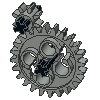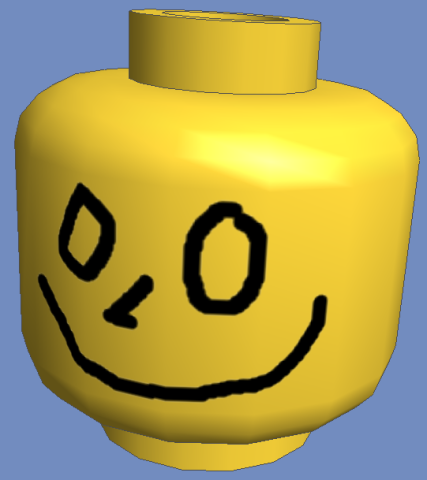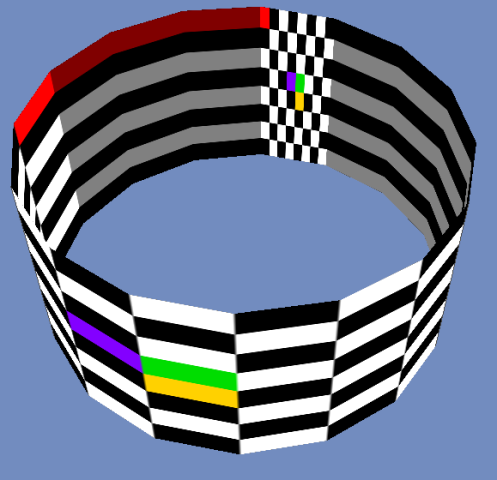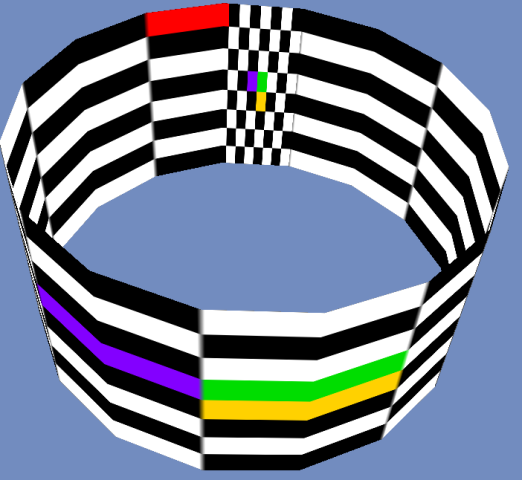| Welcome, Guest |
You have to register before you can post on our site.
|
| Forum Statistics |
» Members: 5,532
» Latest member: jon carol
» Forum threads: 6,308
» Forum posts: 52,552
Full Statistics
|
| Latest Threads |
Technic 1992
Forum: Official Models
Last Post: Takeshi Takahashi
2 hours ago
» Replies: 29
» Views: 41,784
|
Part 11459p01.dat colour ...
Forum: Parts Authoring
Last Post: N. W. Perry
Yesterday, 15:11
» Replies: 3
» Views: 194
|
Missing Opal Trans Yellow
Forum: Official File Specifications/Standards
Last Post: Willy Tschager
Yesterday, 9:29
» Replies: 1
» Views: 162
|
Submit button
Forum: Website Suggestions/Requests/Discussion
Last Post: Orion Pobursky
Yesterday, 2:12
» Replies: 1
» Views: 155
|
Part 14769p10.dat gaps an...
Forum: Parts Authoring
Last Post: N. W. Perry
2025-12-26, 21:55
» Replies: 3
» Views: 239
|
30mm vs 30.4mm Wheels & T...
Forum: General LDraw.org Discussion
Last Post: tom alphin
2025-12-26, 5:50
» Replies: 9
» Views: 4,205
|
LDraw.org 2025-12 Parts U...
Forum: LDraw.org Announcements
Last Post: Orion Pobursky
2025-12-25, 5:21
» Replies: 0
» Views: 188
|
Could stickers be mapped ...
Forum: Parts Authoring
Last Post: N. W. Perry
2025-12-23, 22:02
» Replies: 10
» Views: 563
|
Suggestion: for primitive...
Forum: Parts Tracker Discussion
Last Post: Willy Tschager
2025-12-23, 15:51
» Replies: 1
» Views: 176
|
Feature request - Add cur...
Forum: LDraw Editors and Viewers
Last Post: Roland Melkert
2025-12-23, 8:11
» Replies: 5
» Views: 323
|
|
|
| Naming scheme for primitives - update |
|
Posted by: Michael Heidemann - 2014-08-11, 17:15 - Forum: Parts Authoring
- Replies (18)
|
 |
It seems that there is a need for updating the naming scheme that Primgen2 uses for the primitives.
Here my suggestion:
x, y, z are values that will be substituted by primgen2 for the dimension of the part.
cylinder: x-ycyli.dat : always use cyli
disc: x-ydisc.dat : always use disc
ndisc: x-yndis.dat : always use ndis
chord: x-ychrd.dat : always use chrd
cone: x-yconz.dat : always use con
ring:x-yringz.dat : always use ring
circle: x-yedge.dat : always use edge
The length of the filename is not important anymore because I think we will not reach 25 characters.
If this should be common used, I am going to change Primgen2 quickly.
|

|
|
| Lpub/Bricksmith - Changing Orientations in Steps |
|
Posted by: Mark Anderson - 2014-08-10, 16:57 - Forum: General LDraw.org Discussion
- Replies (1)
|
 |
I need a little help creating a set of instructions for a MOC I'm working on.
I'm using Bricksmith (3.0) on my Mac (10.9.4) and then bringing that into Lpub (4.0.0.10). I need to rotate the model in the instructions to show how to attach some pieces. Is there a way to do this in either Bricksmith or Lpub I'm not aware of?
Thanks!!
Mark
|

|
|
| TEXMAP extension thoughts and findings. |
|
Posted by: Roland Melkert - 2014-08-07, 23:27 - Forum: Parts Authoring
- Replies (33)
|
 |
I've been working on the cylindrical implementation and I noticed some minor confusing things about the current TEXMAP spec.
The planar projection uses top/left orientation while the cylindrical one uses center bottom. This isn't a real big problem but the text states the v coordinate should be based on the distance to the base plane. This will cause the picture to be up side down.
So unless I misunderstood something (else) I think it should be the distance to the cylinder top plane.
Using that correction this:
Code: 0 Cyl texmap test minifig head
0 UNOFFICIAL PART
0 BFC CERTIFY CCW
1 16 0 0 0 1 0 0 0 1 0 0 0 1 s\3626bs02.dat
1 16 0 4 0 13 0 0 0 13 0 0 0 -13 1-8cyli.dat
1 16 0 4 0 -13 0 0 0 13 0 0 0 -13 1-8cyli.dat
1 16 0 4 0 13 0 0 0 13 0 0 0 13 2-4cyli.dat
1 16 0 4 0 0 0 8 0 -6.4 0 8 0 0 t04o6250.dat
1 16 0 4 0 -8 0 0 0 -6.4 0 0 0 8 t04o6250.dat
1 16 0 17 0 0 0 -8 0 6.4 0 8 0 0 t04o6250.dat
1 16 0 17 0 8 0 0 0 6.4 0 0 0 8 t04o6250.dat
1 16 0 4 0 0 0 -8 0 -6.4 0 -8 0 0 t04o6250.dat
1 16 0 4 0 8 0 0 0 -6.4 0 0 0 -8 t04o6250.dat
1 16 0 17 0 0 0 8 0 6.4 0 -8 0 0 t04o6250.dat
1 16 0 17 0 -8 0 0 0 6.4 0 0 0 -8 t04o6250.dat
0 !TEXMAP START CYLINDRICAL 0 17 0 0 4 0 0 17 -13 90 smile.png
0 !: 1 16 0 17 0 13 0 0 0 -13 0 0 0 -13 s\minifighead-hlp.dat
0 !TEXMAP FALLBACK
1 16 0 17 0 13 0 0 0 -13 0 0 0 -13 s\minifighead-hlp.dat
0 !TEXMAP END
will render like:

If people agree, we need to correct the spec text.
Second the spec doesn't mention what to do with over scan and or fully enclosed objects.
For example (using Nils' checker png  ). ).
Code: 0 !TEXMAP START CYLINDRICAL 0 0 0 0 -200 0 0 0 -200 180 checker.png
0 !: 1 15 0 -200 0 200 0 0 0 200 0 0 0 -200 4-4cyli.dat
0 !TEXMAP FALLBACK
1 15 0 -200 0 200 0 0 0 200 0 0 0 -200 4-4cyli.dat
0 !TEXMAP END
gives (over scan):

and
Code: 0 !TEXMAP START CYLINDRICAL 0 0 0 0 -200 0 0 0 -200 360 checker.png
0 !: 1 15 0 -200 0 200 0 0 0 200 0 0 0 -200 4-4cyli.dat
0 !TEXMAP FALLBACK
1 15 0 -200 0 200 0 0 0 200 0 0 0 -200 4-4cyli.dat
0 !TEXMAP END
gives (enclosed)

Both having the -180 == 180 problem
But again i'm not claiming my implementation is currently 100% correct.
Thoughts?
|

|
|
| LPub - How to add divider after step? |
|
Posted by: Stefan Edlinger - 2014-08-03, 15:28 - Forum: LDraw File Processing and Conversion
- Replies (2)
|
 |
Hi all, I created a Lego model using Bricksmith on my iMac, now imported it to LPub and I have a lot of steps in there which I want to have on one page... but he just does a list of it, listing step by step in a row on the page even if there is no room. Now according to the instructions of LPub I should right click the step I want to divide and choose "Add Divider after step" so it creates a new column with it.
But I do not have this option... it does not show up, even when the next step is outside of the page and I right click on the building picture as described in the instructions, there is no "Add Divider after step" showing up.
Help anyone please?
|

|
|
|